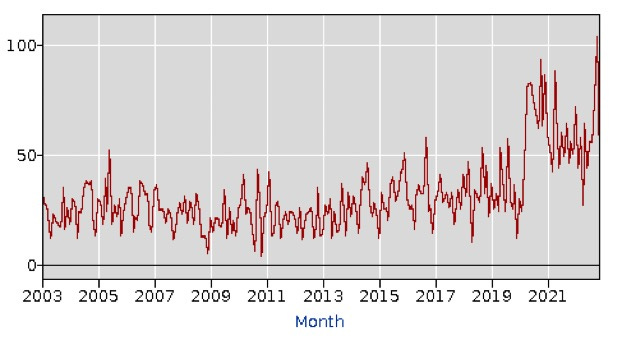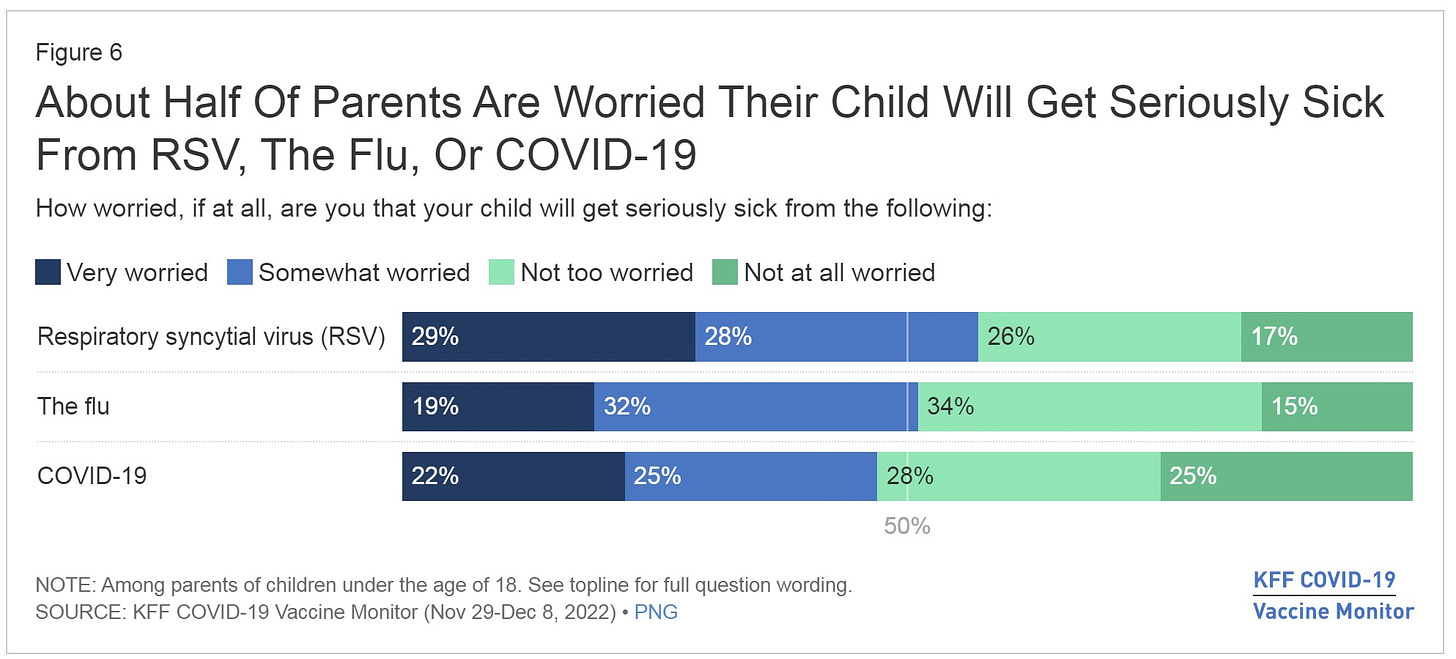Buried in the news of the triple-demic, an updated Omicron booster was authorized for kids under 5 years old. My weekly Q&A on Instagram has been flooded with questions from parents. Here’s a quick update.
Who is eligible for a fall booster?
This is very confusing, as it depends on what vaccine series (and how much of that series) they have received:
Moderna: Every child that had the primary series (2 shots) is eligible for the fall booster
Pfizer:
If your child completed primary series (3 shots), they are not eligible.
If your child did not complete the primary series (i.e., had 1 or 2 shots only), they are eligible for the fall booster.
I’m not sure why this was decided this way. Don’t shoot the messenger.
How is the primary vaccine doing?
Safety. The vaccines continue to be safe. We saw this during the clinical trials, but we continue to see it in the real world. The CDC released results of their active (V-Safe) and passive surveillance (VAERS).
The most frequent reactions: injection site pain, fatigue, and fever.
Four children received care at a hospital after vaccination: two were unrelated to vaccination, one was unwilling to provide further information, and one is under further review. None have died.
No cases of myocarditis were reported.
Effectiveness. The clinical trial data was published in the New England Journal of Medicine. However, we have yet to see any real world effectiveness data. (And I looked hard!) This is likely because uptake has been so low that it’s difficult to assess with certainty.
What is vaccine uptake for kids under 5?
Coverage for the primary series is just atrocious. Only 792,000 children under age 5 have one dose, which equates to 8.4% of this population. This varies widely across states—29% of kids in DC have received their first dose compared to 1.7% in Mississippi.
This is incredibly interesting to me given that, in a recent poll, 1 in 2 parents said they are worried their child will get seriously sick from COVID-19. I would be curious to see the below graph organized by age group.
We are not the only country experiencing slow uptake. Data from Nature show that about a dozen countries, including Canada and Israel, have approved vaccination for children from their first year of life. Yet in Canada, for example, only 8.4% of children aged 0-4 have been vaccinated.
What are you doing with your kids?
My girls (2 and 3 years old) had the primary Moderna series, so they are eligible for a fall booster. It’s not clear how much additional help it will provide in preventing hospitalization. But they will be getting the fall booster for two other reasons:
Broaden protection. SARS-CoV-2 has changed a lot and the fall booster provides updated instructions for our kids’ antibody factories. In other words, it will tell their antibodies how better to recognize Omicron if they get infected.
Short-term protection against infection. A recent study found co-infection of flu and COVID is more severe than just flu or COVID alone for our kiddos. Also, parents missing work due to respiratory illness is at an all time high right now. I’ll take all the help I can get.

I’ve been struggling with timing the fall booster. It’s clear from adult data that delaying the booster is advantageous. My girls finished their primary series 5 months ago. But delaying it too much more won’t be helpful this winter. I talked to Dr. Ruth Link-Gelles about this last week and decided to get them boosted as soon as possible.
That is, if I can find one. According to vaccines.gov, I have to travel more than 45 miles to get my 2 year old the updated booster, which is absolutely unacceptable. If we want to improve vaccine uptake, we have to make it easier.
Bottom line
The updated booster is here for our little ones. To me, an updated booster still makes sense, but finding one is another story.
As parents, it’s absolutely exhausting how many viruses are circulating right now. Hang in there—every epi curve comes down.
Love, YLE
“Your Local Epidemiologist (YLE)” is written by Dr. Katelyn Jetelina, MPH PhD—an epidemiologist, data scientist, wife, and mom of two little girls. During the day she works at a nonpartisan health policy think tank and is a senior scientific consultant to a number of organizations, including the CDC. At night she writes this newsletter. Her main goal is to “translate” the ever-evolving public health science so that people will be well equipped to make evidence-based decisions. This newsletter is free thanks to the generous support of fellow YLE community members. To support this effort, subscribe below:







I love your newsletter. As a physician I am all in on boosters for at risk adults and elderly. However, I am still in the “wait and see”mode for children because of lack of real world effectiveness data and potential risk data . Covid is a disease which very rarely causes serious illness in children.
In my experience, as a grandparent and a physician, getting the booster is hard! So add the "pandemic is over" widespread belief/narrative, to the fact that vaccines tend to be administered in pharmacies now and children under 2 have to see a provider and most pediatric/family medicine offices aren't offering the vaccine and/or booster. Lack of knowledge and inconvenience and the downplaying of risk of infection are all working to lower uptake. IMO. In my state, public health has been largely dismantled, the "pandemic is endemic" narrative the official theme of our local --very hardworking and quite good--health department and yet I'm seeing so much disease. So discouraging.